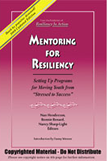
“Trauma-informed” has become the latest focus in counseling, education, and the providing of social services, and it is very important. It means:
- An awareness of how behaviors and symptoms connect to traumatic experiences.
- An emphasis on physical, psychological, and emotional safety for staff and clients.
- An opportunity for people to regain a sense of control.
- And a focus on strengths rather than deficits.
A first step in grasping the meaning of trauma-informed care is to recognize how common trauma is and to create a foundational understanding that any person you engage with may be coping with the after-effects of trauma.
It is crucial to also take the first step of realizing every person you encounter has demonstrated some level of resiliency in their lives, and it is their resiliency characteristics that will be a lifeline in healing from trauma.
Strategies for “resiliency-informed, trauma-informed” care include:
- Establishing and prioritizing the physical and emotional safety.
- Building trust by following through, regulating your emotions, and actively listening.
- Offering choices and options when possible.
- Recognizing the signs and symptoms of trauma exposure as it relates to physical, emotional, and psychological health.
- Helping clients/students/family members see their strengths and how they can apply them to life challenges.
- Ensuring collaboration by developing mutually agreed-upon goals with whomever you seek to help.
- Providing care based on cultural humility with a recognition of cultural strengths (as well as historical trauma).
- Use “The Resiliency Wheel,” “The Resiliency Quiz,” and the list of individual resiliency builders at www.resiliency.com to assist others in bouncing back from their adversity. (Read the free article: “Hard-Wired to Bounce Back.”
Buy The Resiliency Workbook: the perfect workbook for anyone wanting to know more about how to bounce back from life’s challenges.


 It is tempting to watch this powerful story, just released on Netflix, and think Kya is an exception. But according to the body of resiliency research, she is not. As resiliency pioneer researchers Drs. Steve and Sybil Wolin write in their excellent book,
It is tempting to watch this powerful story, just released on Netflix, and think Kya is an exception. But according to the body of resiliency research, she is not. As resiliency pioneer researchers Drs. Steve and Sybil Wolin write in their excellent book, 

